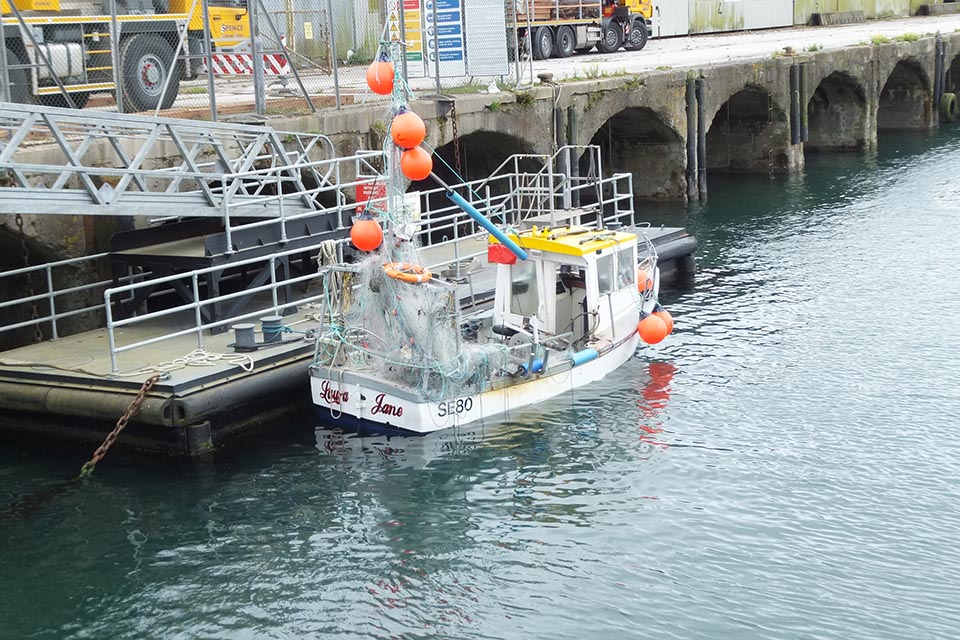Safety flyer to the fishing industry - Laura Jane
Published 25 April 2019
1. Summary
Fishing vessel Laura Jane (SE80) capsize with the loss of one life

Fishing vessel Laura Jane
2. Narrative
At 1311 on 7 May 2018, the single-handed fishing vessel Laura Jane capsized off Mount Batten Breakwater in Plymouth and remained floating on its starboard side. Although around 20 vessels converged at the scene immediately, there was no sign of the skipper, who was in the wheelhouse at the time of the accident. An RNLI lifeboat towed Laura Jane to Batten Bay beach and, at around 1400, two lifeboat crew members broke a wheelhouse window and extracted the skipper from the vessel. He was unconscious and not breathing. Despite resuscitation attempts by the lifeboat crew and paramedics, and transfer to the local hospital, the skipper did not survive.
3. Analysis
The MAIB investigation established the following:
- The weight of the fishing gear on Laura Jane reduced its freeboard to the extent that water entered the vessel through its freeing ports, causing it to capsize.
- In 2012, the Maritime and Coastguard Agency (MCA) had inspected and categorized Laura Jane as a decked vessel without knowledge of its freeboard. During its next inspection in 2016, Laura Jane was recategorised as an open vessel because it did not meet the recommended minimum freeboard for a decked vessel. Despite the recategorisation, the vessel’s freeing ports were allowed to remain.
- The existence of freeing ports on an open vessel went unchallenged during subsequent MCA inspections of Laura Jane due, in part, to a misinterpretation by surveyors as to what was required to be inspected.
- The skipper had not completed the mandatory Safety Awareness and Risk Assessment training course or any stability awareness training.
4. Safety lessons
- Open fishing boats are not permitted to have freeing ports. A low freeboard significantly reduces the stability reserve of small vessels, increasing the risk of capsize.
- Any vessel will capsize if overloaded. It is important to recognise the safe loading limits of the vessel and never to load it beyond these limits.
- It is the owner and skipper’s responsibility to maintain the seaworthiness and safety of their vessel.
- Owners are advised to assess the stability of their vessels in accordance with MSN 1871(F), MGN 503(F) and MGN 526(F), and display stability guidance notice (Wolfson Guidance Mark) in a prominent place in the wheelhouse as well as on either side on the hull.
Our accident investigation report is available at: https://www.gov.uk/maib-reports/capsize-of-fishing-vessel-laura-jane-with-loss-of-1-life
For all general enquiries:
Marine Accident Investigation Branch
First Floor, Spring Place
105 Commercial Road
Southampton
SO15 1GH
Email [email protected]
Enquiries during office hours +44 (0)23 8039 5500

